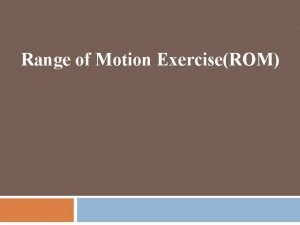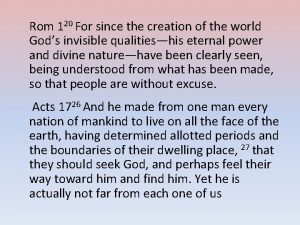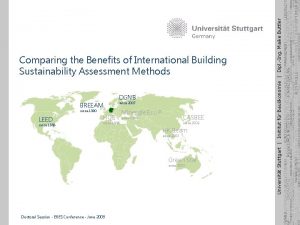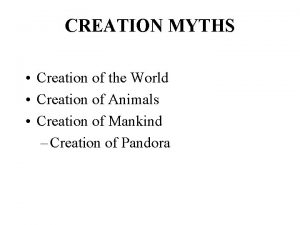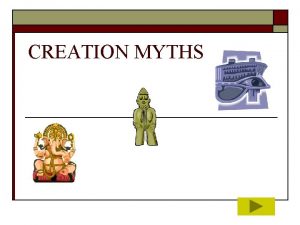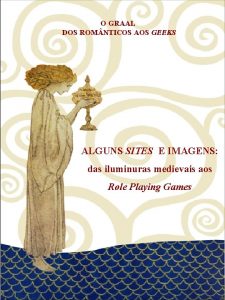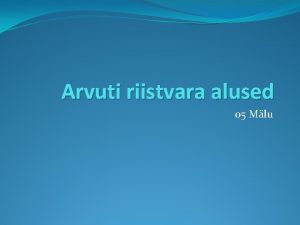Rom 1 20 21 For since the creation











- Slides: 11

Rom 1: 20 -21 For since the creation of the world God's invisible qualities-his eternal power and divine nature-have been clearly seen, being understood from what has been made, so that men are without excuse. For although they knew God, they neither glorified him as God nor gave thanks to him, but their thinking became futile and their foolish hearts were darkened.

Zech 4: 10 For who has despised the day of small things?

Proverbs 30: 24 -28 Four things on earth are small, yet they are extremely wise: ants are creatures of little strength, yet they store up their food in the summer; coneys are creatures of little power, yet they make their home in the crags; locusts have no king, yet they advance together in ranks; a lizard can be caught with the hand, yet it is found in kings' palaces.

The Garden of the Leaf-cutting Ants These red ants live in Central and South America. They climb bushes and trees and cut the leaves into 1 -2 inch pieces and car-ry them overhead into football -sized under-ground rooms in their nest. One ant colony may have millions of members and their nest thousands of chambers. In the nest special worker ants chew up the millions of leaves into smaller pieces. Then they re-lease a fluid to dampen them, so the leaves start decaying and turning into soil. Soon fungi begin growing in these "gardens". The ants regularly weed their garden from mil-dew and other types of fungi. Then they happily feed on their crop. How can this be explained by evolution?

The Hummingbird's "Impossible" Migration One marvel of the living world is migration. Many birds go south in the winter. The arctic tern migrates from the Arctic to the Ant-arctic and back each year. Birds have no maps to guide them, but they fly with such precision as airplane pilots. Some birds are now known to travel by the sun and the stars and some by the earth's magnetic field. Many flights are non-stop and require lots of energy. For example, the ruby-throated hummingbird weighs only one tenth of an ounce (3 grams). It crosses the Gulf of Mexico twice a year, from North to South America and then back, 620 mi (1000 km). It beats its wings 75 times a second for 25 hours non-stop. That is over 6 million wing beats non-stop! Using computers and extensive metabolic studies, scientists have recently concluded that the hummingbird cannot do this. They say that the 3 gram hummingbird can't store enough energy for the flight. It would have to run out of fuel. But the little bird doesn't concern itself with scientific studies, and makes the "impossible” trip twice a year.

The Giraffe's Special Circulatory System There is more to the giraffe—the tallest animal—than a long neck. There a variety of differences between a giraffe and a normal, short-necked animal. Since blood needs to be pumped several meters up to its brain, it has double the average blood pressure and the strongest heart in the world. The heart weighs 25 pounds and is 2 feet long. Its walls can be up to 3 inches thick. But the problem is that the brain can't stand high blood pressure; so when the giraffe bends down to take a drink, its blood pressure would destroy the brain. The Creator provided for this: the giraffe has one-way check valves in his jugular veins, which close when the head is lowered. But there is still too much blood in the carotid artery. This extra amount of blood is taken to a piece of spongy tissue full of small blood vessels near the brain, which soaks it up. In addition, the cerebrospinal fluid (around the brain) produces counter pressure and prevents capillary rupture. The walls of the giraffe arteries are thicker than those of any other mammals. Considering all these changes required for "just" a long neck, it is clear that the giraffe could not have evolved.

Camels—Confirmation of Creation It is the camel’s ability to survive for long periods without water (up to several weeks if leafy plants are available), and its ‘hump’ for which it is best known. It was once assumed the camel stored water in its hump. However the hump, composed of connective tissue overlying the backbone, is where the camel stores fat. A camel may store up to 100 pounds in the hump(s), drawing on this stored food when feed is scarce during a journey. If forced to go without water, the camel uses three main mechanisms to survive: *Firstly, by concentrating its urine more, it excretes less water in it. *Secondly, the camel has a large range of body temperature, and does not begin to sweat freely until it reaches 41°C (105°F), at which temperature a person would be very sick. While our internal temper-ature remains constant at around 37°C (98. 6°F), the camel can ‘cool off’ overnight. It starts the day with a body temperatur of only 34°C (93°F), and so it takes till nearly mid-day to heat up to 105°F, at which it starts to sweat. By this time, the cooling processes of other mam-mals, though efficient, would have already caused large losses of water.

Thirdly, when most mammals are forced to go without water, their blood becomes thicker as a result of moisture loss (which becomes fatal if not replaced). But water lost by the camel is replaced by water drawn from other body tissues. This lost water, which can be up to a quarter of its body weight, can be rapidly replaced. Camels can drink more than 25 gallons of water in 10 minutes which rapidly restores their dehydrated tissues.

Lobster eyes - brilliant geometric design Lobster eyes, X-ray telescopes, and microchips The eye of a lobster (and some other 10 legged crustaceans 1 including shrimps and prawns) shows a remarkable geometry not found elsewhere in nature—it has tiny facets that are perfectly square, so it ‘looks like perfect graph paper. ’ This is needed, because the eye focuses light by reflection, unlike most other eyes that focus by refraction (bending of light) by a lens. The graph paper appearance is caused by the ends of many tiny square tubes on a spherical surface. The sides of the tubes are very flat and shiny mirrors, and their precise geome-trical arrangement means that parallel light rays are all reflected to a focus. The square arrangement is crucial, because only with the reflectors at right angles can it form an image from light rays from any direc-tion. 4 Also, only if the tubes are about twice as long as they are wide can they reflect most light rays off exactly two mirrors. Concentrat- ing light from a relatively wide area is useful when it’s quite dark, but in bright light the lobster’s eye moves opaque pigment to block all light rays to the retina other than those parallel to the tubes. How can this be explained by evolution?

Wonderful worms - The humble earth-worm is much more than bait for fish hooks Earthworms are highly specialized creatures. They seem obviously designed for their important task of burrowing through soil. They burrow into the ground in nearly all parts of the world, and make an important contribution to the fertilization, aeration and drainage of the soil. Earthworms drag organic material from the surface into the ground. They also swallow huge amounts of earth, digest the nutritive matter it contains, then cast up the remains on to the surface of the ground or in their bur-rows. In this way they work at a constant and effective system of plowing, which enriches and oxygenates the soil An average acre may house three million earthworms, which can move about 18 ton of soil per year. Most are found in the top five inches of soil. Their work is so com- plete that in the areas in which they live almost all the soil to a depth of many centimeters has passed through the gut of an earthworm at some time. Can evolution explain the earthworm’s activities of loos-ening, stirring up and aerating the soil to make it more fertile? A better explanation is that the Creator designed and planned the earthworm in the beginning, to be a willing, if humble, servant of the plant world. By this means, therefore, it helps to sustain the balance of all other life on this earth.

Rom 1: 20 -21 For since the creation of the world God's invisible qualities-his eternal power and divine nature-have been clearly seen, being understood from what has been made, so that men are without excuse.
 Kvinnlig mantel i antikens rom
Kvinnlig mantel i antikens rom Range of motion types
Range of motion types What is active range of motion
What is active range of motion Active assistance rom
Active assistance rom Range of motion exercise definition
Range of motion exercise definition Jag har gått inunder stjärnor text
Jag har gått inunder stjärnor text A gastrica
A gastrica Boverket ka
Boverket ka Var 1721 för stormaktssverige
Var 1721 för stormaktssverige Typiska drag för en novell
Typiska drag för en novell Formel standardavvikelse
Formel standardavvikelse Ledningssystem för verksamhetsinformation
Ledningssystem för verksamhetsinformation



